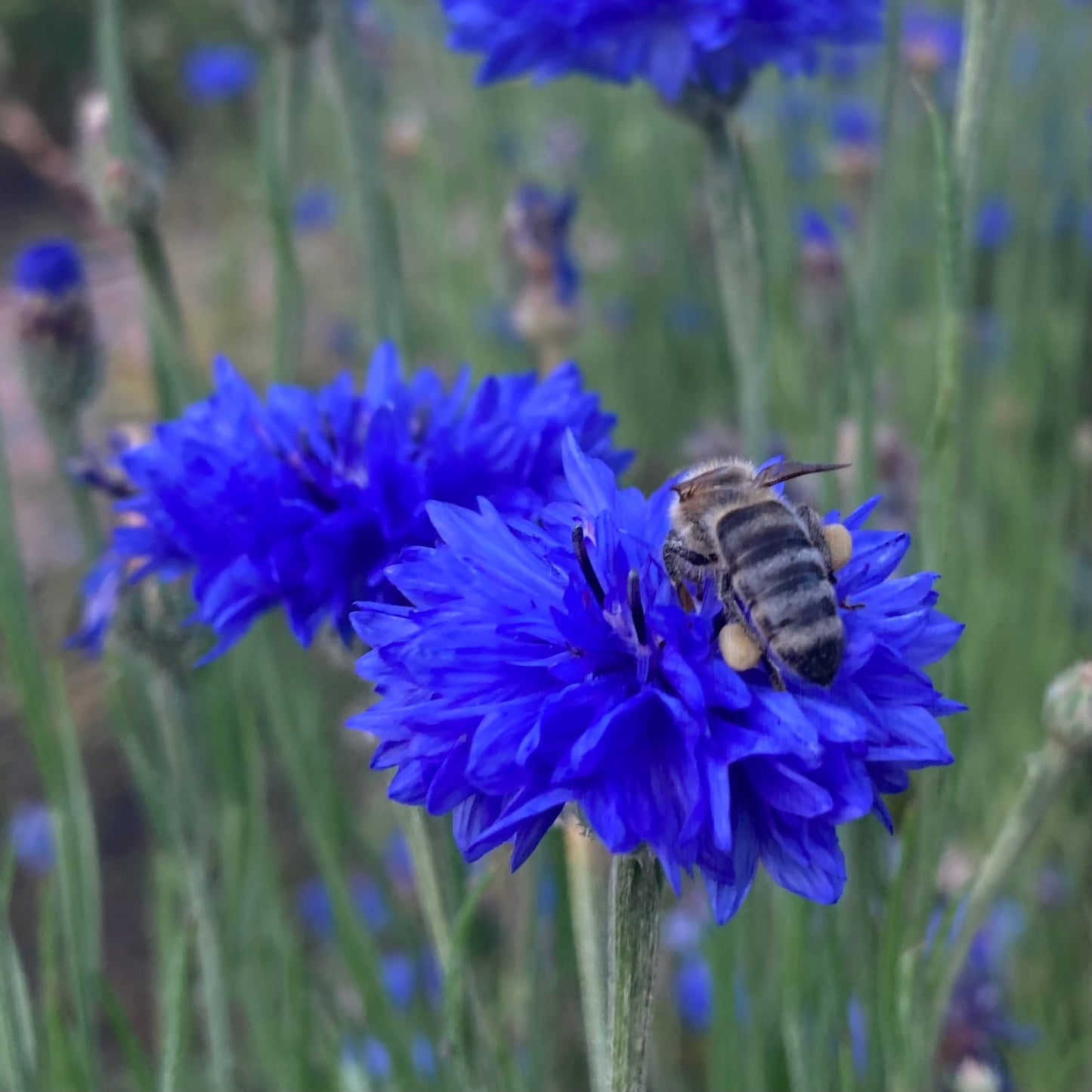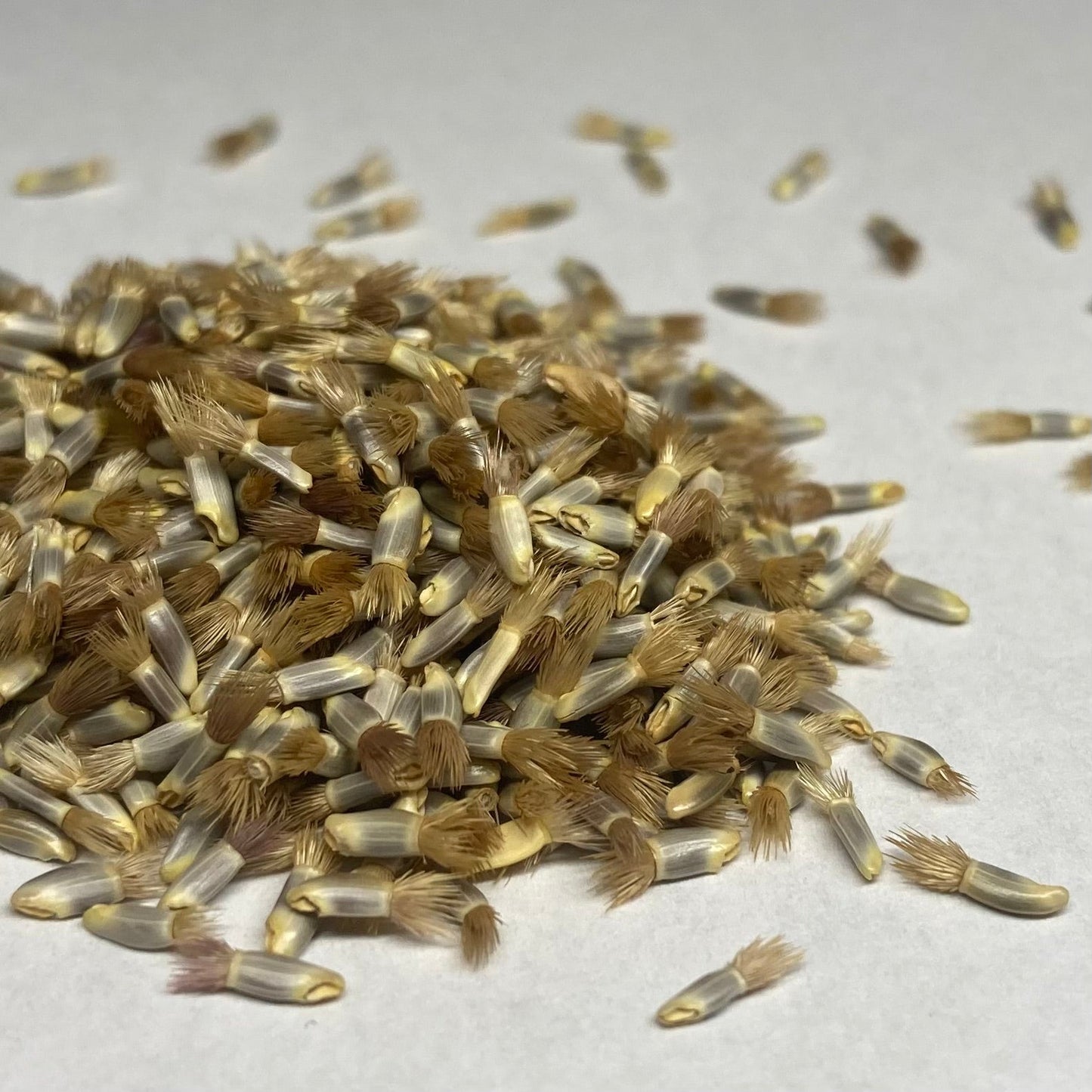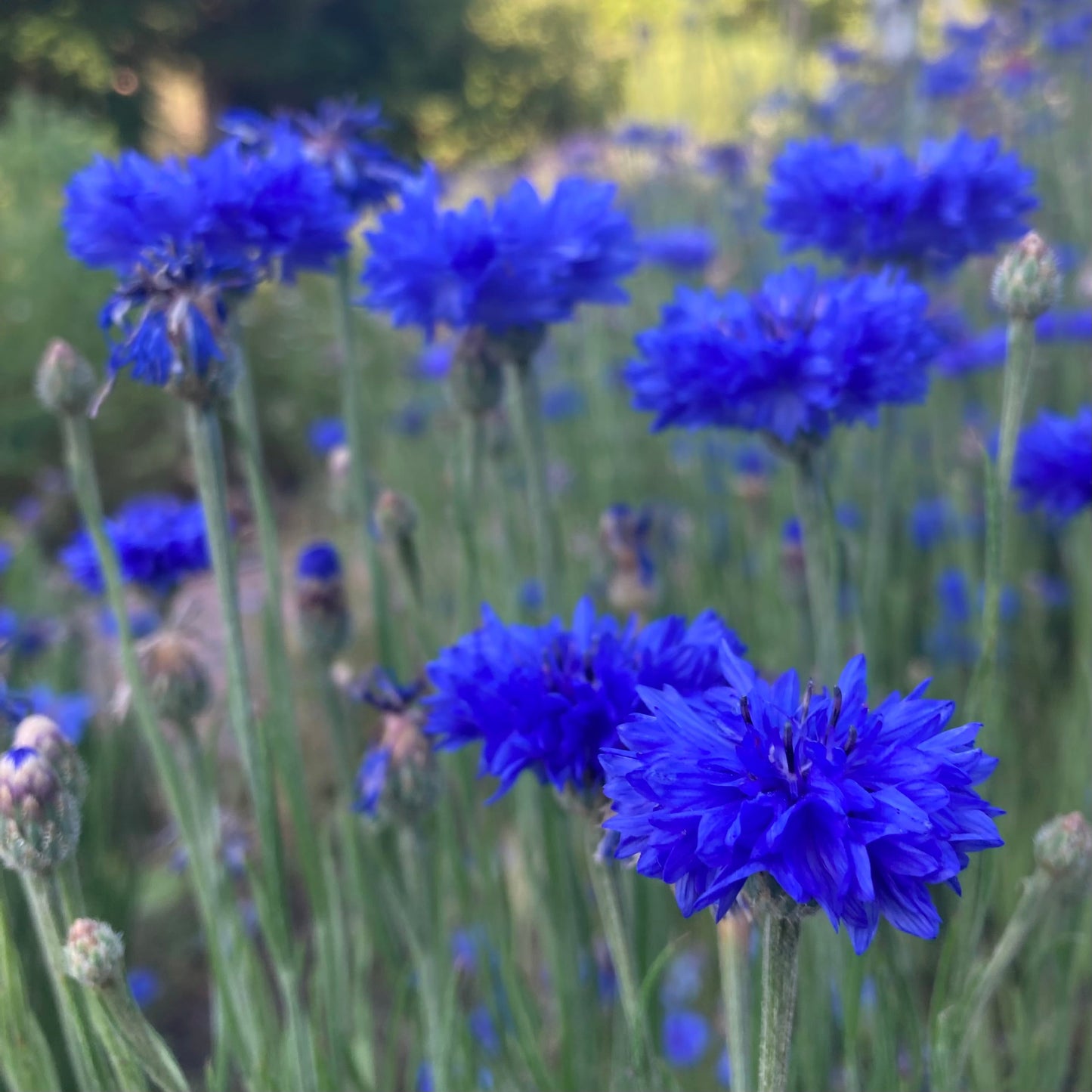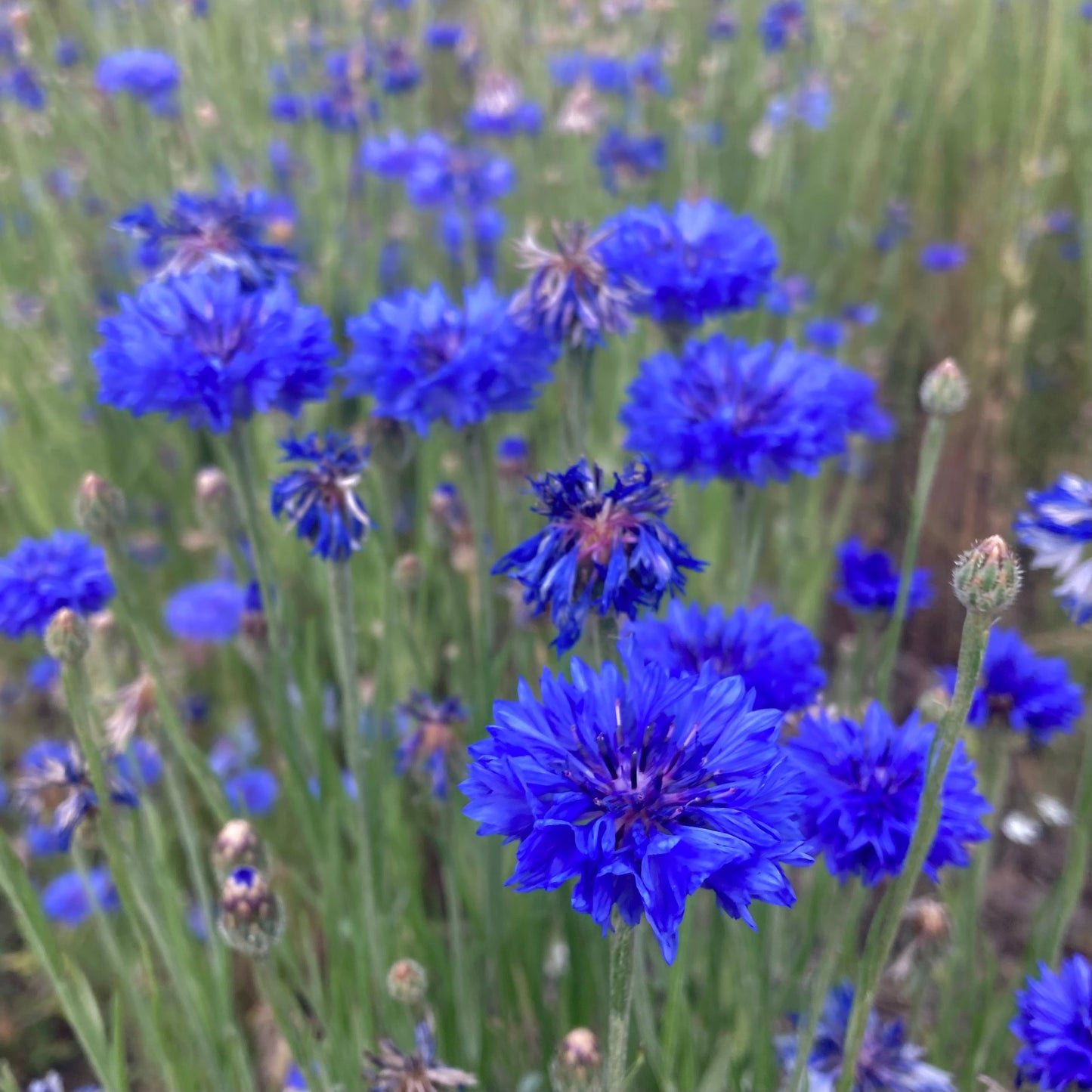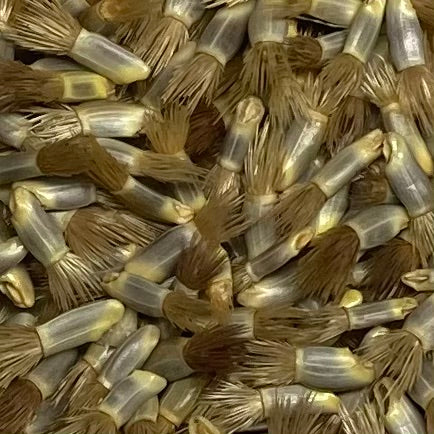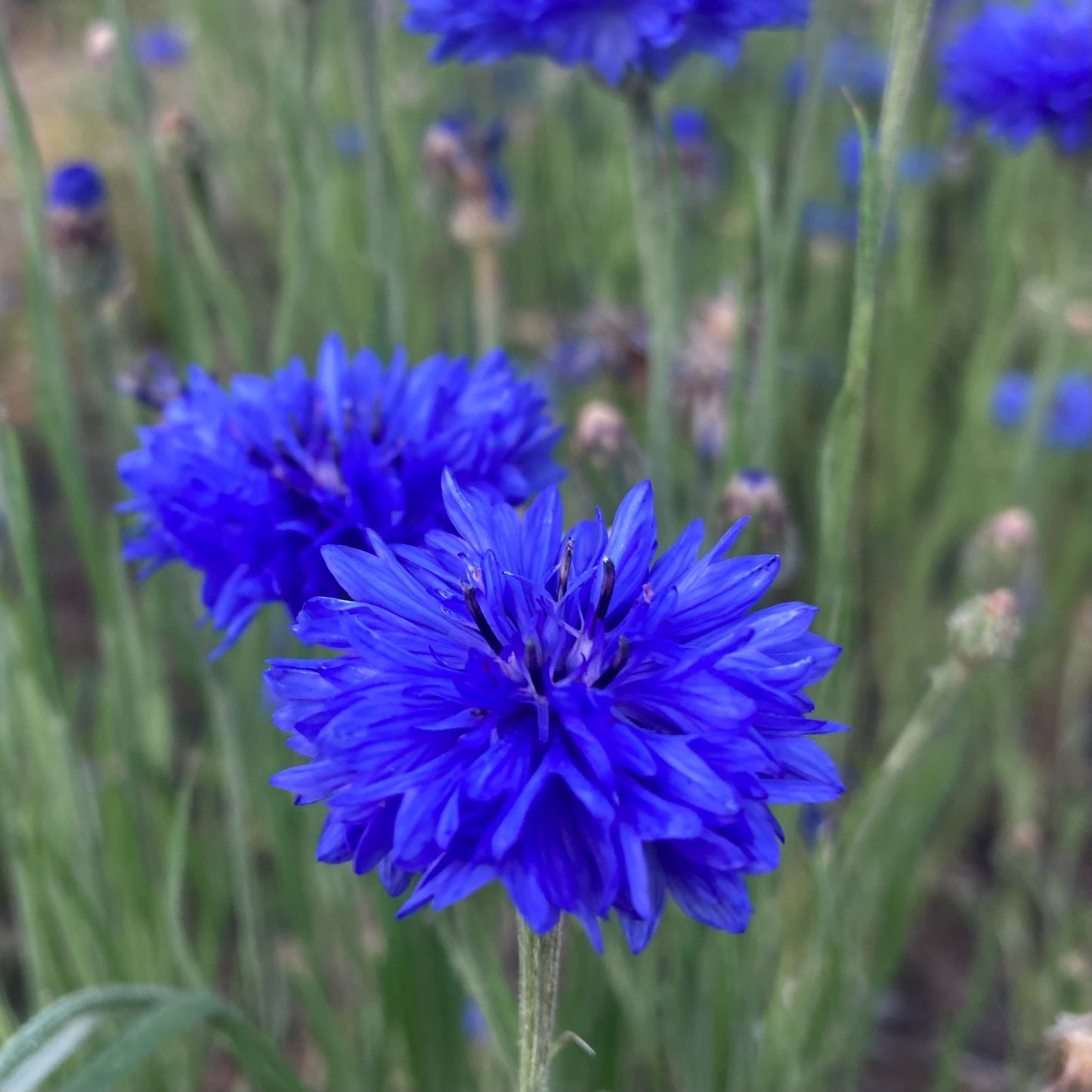Cornflower, Blue (Centaurea cyanus)
List Price: $4.00
Couldn't load pickup availability
One of those rare true-blue flowers, Blue Cornflower is a treasured annual that would be pleased to find itself amongst other wildflowers in meadows, along walkways, or any host of naturalized settings. This plant is easy to grow, and an excellent choice to take on for someone with thumbs not yet green. Take care to not allow the flowers to set seed to excess, because they will self-seed prolifically. One can extend their flowering season, from spring into early summer, by deadheading old blooms. Their common name originates from the ubiquity Blue Cornflower once had in European cornfields; with the use of herbicides, this plant has rapidly declined from its former wild abundance. The common name ‘Bachelor’s Button’ references the old practice of a man wearing a cornflower in the buttonhole of his suit to indicate he was in love or hoping to court. In modern contexts, they feature widely in wedding boutonnieres, continuing to represent devotion. Other common names are ‘Bluebonnet’ in Scotland, and ‘Ragged Robin,’ or ‘Ragged Sailor’ in North America. The plant’s genus ‘Centaurea’ is derived from the words meaning ‘centaur,’ as it was said the mythological Greek centaur Chiron discovered the plant’s medicinal properties. In Ancient Egypt, this plant suggested fertility, resurrection, and renewal, so much so that King Tutankhamun was buried with a woven collar with Bachelor Button designs. In the middle ages, similar symbolic associations linked this flower to the Virgin Mary.
A bit of history in which Centaurea cyanus has a prominent role is the tale of Queen Luis of Prussia: said to have hid her children in a field of Cornflowers when she fled Berlin, she kept them quiet by weaving wreaths made from the flowers. To honor her courage, Cornflower blue was adopted as the color of Prussian military uniforms. In France, this flower was worn by veterans of the world wars, as a reminder of the 1918 armistice. It is said to have been one of the only plants in the trenches to survive battle’s mud and bombs. Blue Cornflowers are also considered the trademark symbol of Corning Glass Works’ products.
The blooms of Centaurea cyanus attract native honeybees, bumblebees, butterflies, hummingbirds, and other beneficial pollinator insects. Cornflowers are edible to humans, and have a sweet cucumber taste; their petals are beloved for coloring teas. There are said to be applications of this plant to make washes or drops for eye irritation. A well-known application for this flower is in natural dyeing; it creates a lovely blue pigment. One of the few plants from which a true blue (sometimes a purplish blue) can be derived, Bachelor Buttons are a great addition to a dye garden if one is hoping for diversity and cool tones in their dyeing endeavors.
